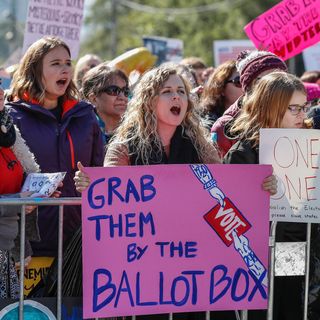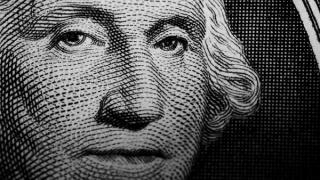Elections in the United States are big business. Candidates have to pay for staff, travel, advertising, get out the vote activities and office space. However, there is very little in the way of public funding for US election campaigns. This means candidates and parties need to raise money from private donors.
Explainer: Getting out the vote – how US voters are mobilised

In the 2018 midterm elections, Democrats appear to have the advantage. They are set to heavily outspend Republicans. In the last two weeks of the campaign, Democratic candidates and aligned outside groups are predicted to spend US$143 million on television advertising in House of Representative campaigns, compared with US$86 million for Republican candidates and outside groups.
Elections and money in the United States
Compared to Australia, the amount of money raised in American politics is vast. In the 2016 presidential election, Hillary Clinton’s campaign raised approximately US$1.4 billion (between her campaign proper, the Democratic Party, and joint party fundraising and aligned outside groups). Donald Trump’s campaign raised slightly less: a still impressive US$958 million.
Less money is generally spent on midterms than presidential election years, although congressional race amounts can look similar. But due to the polarised nature of US politics today and the importance on winning or retaining control of Congress and state governments, the 2018 midterms are on track to be the most expensive ever.
How much has been donated this time?
Record spending in 2018 is largely driven by Democratic candidates, who have been particularly successful at raising large amounts of money for this election. This does not automatically equal success, however. Hillary Clinton easily out-raised and out-spent Donald Trump during the 2016 campaign and still lost. But combined with the large numbers of congressional Republican incumbents who have retired (about double the Democratic number), the Democrats may well have a good November.
Where does this money come from, where does it go?
Most donations have business origins. It appears the largest sources of campaign contributions this election cycle are the finance, insurance and real estate sectors, which have collectively donated nearly US$720 million to campaigns, interest groups and other political entities. These industries are mostly equal opportunity donors, with 52 per cent of their donations to candidates and candidate-aligned groups going to Republicans and 48 per cent to Democrats.
There are, however, substantial funds in play from non-business donors. Ideological and single-issue donors have given US$544 million (with 70 per cent going to Democrats) and labour groups have given $135 million (with 84 per cent to Democrats).
Millions of the dollars flooding into the Democratic Party is also 'dark money' - funds from donors who are not legally required to reveal their names - which the Democratic Party usually says it is reluctant to take (with this also being a feature of Republican fundraising).
It appears the largest sources of campaign contributions this election cycle are the finance, insurance and real estate sectors, which have collectively donated nearly US$720 million to campaigns, interest groups and other political entities this election cycle
Big fundraisers in the House tend to be contesting competitive suburban districts. They also reflect the Democratic advantage in money this cycle. Four of the top five fundraising candidates for the House are Democrats: George Ossoff in Georgia 6 (Republicans held, in the suburbs of Atlanta), David Trone in Maryland 6 (Democratic held, stretching from the outer suburbs of Washington DC to rural Maryland), Scott Wallace in Pennsylvania 1 (Democratic held, suburban Philadelphia) and Gil Cisneros in California 39 (Republican held in Orange County).
The one Republican House candidate in the top five fundraisers is Devin Nunes, who is fighting to retain California’s 22nd District (in the Central Valley).
In the Senate, the top five recipients consist of three Republicans and two Democrats. Contesting Texas, Democrat Beto O’Rourke (US$69 million) has so far out-raised the Republican incumbent Ted Cruz ($30 million) by more than 2:1 in a long shot race to take a Senate seat the Democrats have not been able to win for 30 years.
In Florida, Republican Rick Scott has raised US$69 million, while Democrat Claire McCaskill has raised US$33 million in Missouri and Republican Bob Hugin has raised US$30 million in New Jersey.
Does this money make a difference?
The candidate who spends the most money during the campaign usually wins.
Money spent on television advertising may have a small impact, but this wears off quickly, and the exact effect is debatable. In-person campaigning can boost turnout, however, even if money helps with electoral success, research suggests donations do not substantially influence policy outcomes.
Money in US politics
Elections in the United States are big business. Although the amounts of money being thrown around sound like a lot (it has been predicted that more will be spent on the 2018 midterm elections than it cost to make all 19 of the Marvel comic book movies released so far), are these amounts too much, or are they actually a small amount in the scheme of things? One argument is that this is not a lot of money, and might actually be a small price to pay for the cost of maintaining American democracy.
Regardless of the effects, it is clear that American election campaigns are becoming increasingly expensive, and the ability to raise ever larger sums seems to be becoming pivotal for successful candidates.






